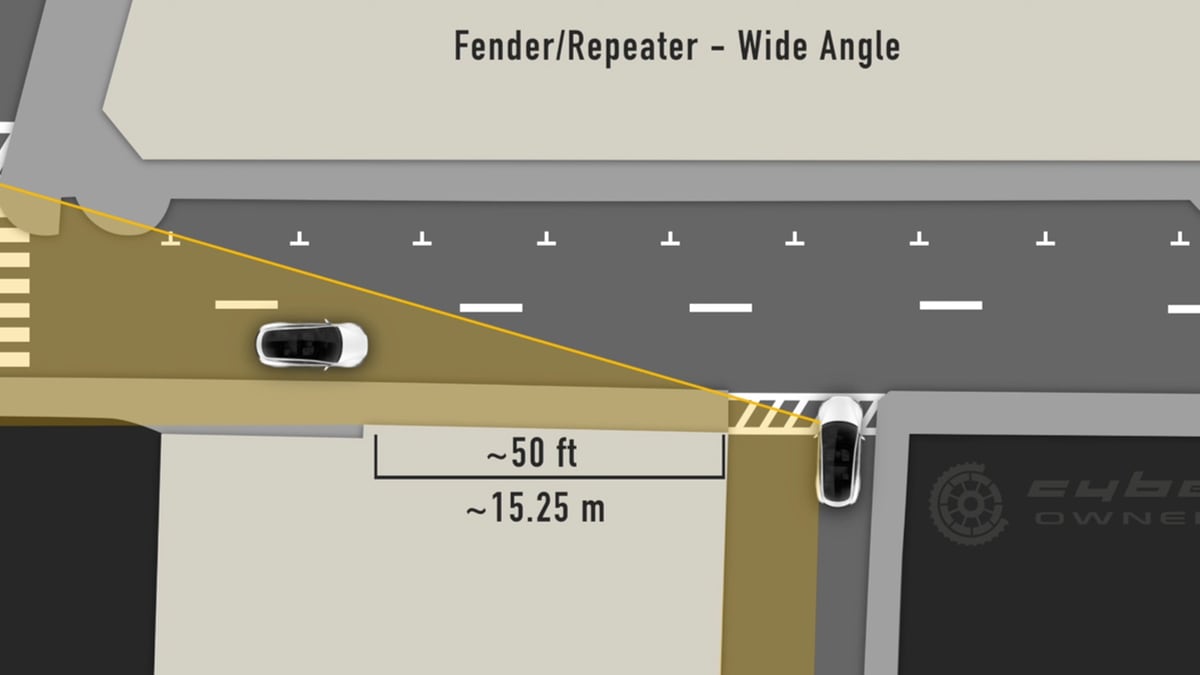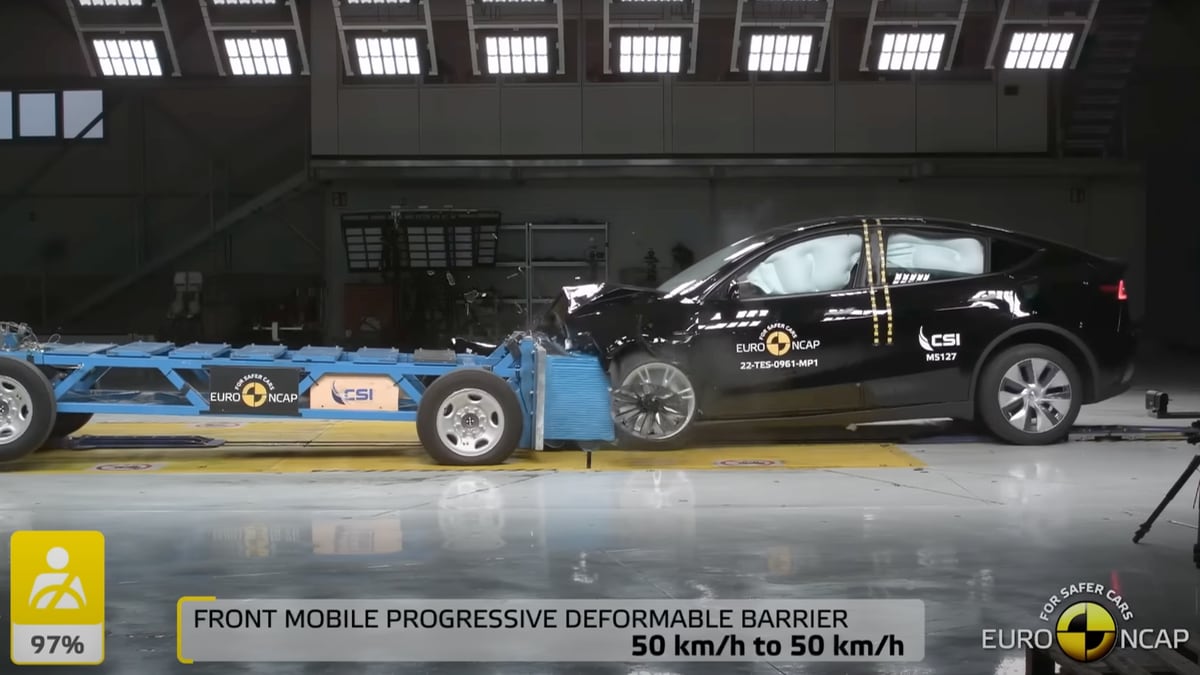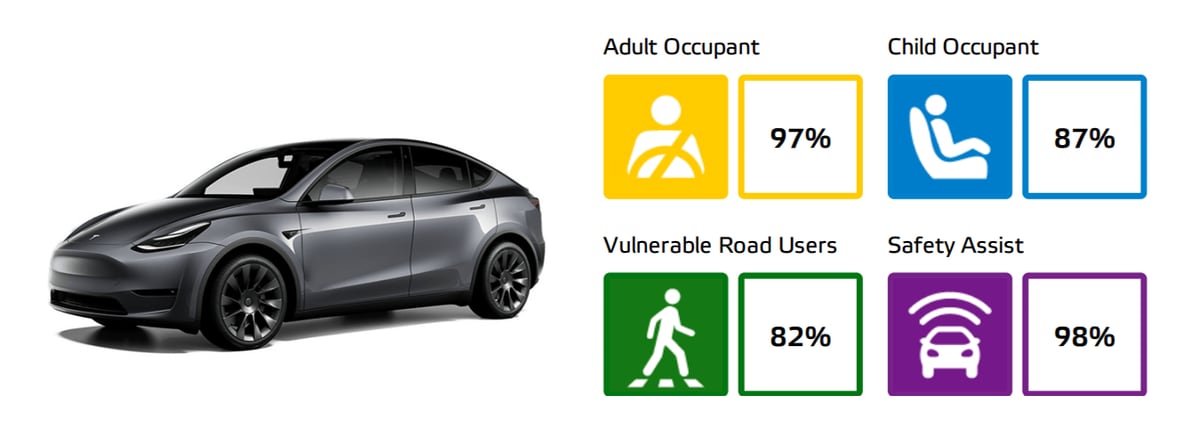By Kevin Armstrong

Tesla continues to roll out Full Self Driving and has also increased the cost of FSD. The system is logging millions of miles and constantly improving as Elon Musk continues his quest to make driving safer, preventing injuries and saving lives. However, there are still many skeptics of the program that has the potential to revolutionize transportation as we know it.
Some of Tesla's most prominent supporters are its harshest critics, but Musk said at the Tesla shareholders meeting in August that he welcomes honest evaluations. The YouTube channel for CyberOwners has a truthful, well-explained assessment. Mike Hoffman of CyberOwners demonstrates and clearly explains one of the most significant issues with Tesla's ability to see its surroundings and navigate safely. The blind corner.
Video Explanation
We've all encountered these situations while driving. Something obstructs our view, and we must lean over the steering wheel while slowly creeping forward to see if it's safe to proceed. As Hoffman shows, the current camera setup has a large area it can not detect. But there are solutions, some that would cost a lot of money and some that could be a simple camera swap.
Hoffman believes Tesla may already be testing a new repeater camera. The repeater camera, more commonly known as the blind spot camera, is on the front fenders. These cameras capture video to the side and back of the vehicle. But Hoffman noticed something different in a video posted by Ashok Elluswamy (below), Tesla's Director of the Autopilot Program.
It appears the program is gathering data from the repeater camera that is further forward than the current camera view. There is also speculation that the video Elluswamy shows is from the b-pillar, the one that is between the front and rear doors. Hoffman says the camera sees much further ahead and is convinced a new repeater camera is being used.
Alternative solutions to this blind corner dilemma include adding cameras to the front bumper and fog lights or moving the b-pillar camera to the side mirror housing. However, this would require new cameras and wiring, which would mean the computer would have to analyze more video streams. This action would be a considerable cost for Tesla, and Hoffman believes a camera swap is much more probable.
Hoffman might be right. It would not be the first time Tesla has changed the repeater camera. When a software update in 2021 included the blind spot feature, some users discovered the repeater camera had glare and was not much help. Tesla changed those cameras out for free.
Most of Tesla's cameras are made to be quickly swappable. Repeater cameras and b-pillar cameras can be swapped out in less than five minutes. That said, this change would require Tesla to swap out potentially millions of cameras. Not a cheap solution, but perhaps the best one to improve another aspect of a system on the cutting edge of technology.
By Gabe Rodriguez Morrison

Tesla continues to prove they make the safest cars on the road, with the Model Y receiving the top safety rating from Euro NCAP and Australia’s ANCAP.
Australasian New Car Assessment Program (ANCAP) is the latest car safety agency to give Tesla’s Model Y a top safety score. The Model Y just arrived in Australia a few months ago, despite being a popular vehicle in the U.S. market for some years now.
The Model Y also achieved a top safety score with the National Highway Traffic Safety Administration (NHTSA) in the U.S.
ANCAP released its five-star safety rating for the Model Y. Tesla scored well in all categories but excelled in adult occupant protection and safety assist.
The Model Y scored near-perfect results in the Adult Occupant Protection category, with an outstanding score of 97%. The highest score of any vehicle tested in this protocol. The score for the Adult Occupant Protection category is determined by a series of frontal, side and rear crash tests. Additionally, the score includes several other safety factors such as rescue, extrication and post-crash safety.
Tesla will continue to iterate on the vehicle's design and software to achieve even better safety scores in the future.
In fact, Tesla's CEO Elon Musk recently tweeted that Tesla has already improved Tesla Vision further since these tests have taken place.
We have since improved it further
— Elon Musk (@elonmusk) September 8, 2022
However, there are always areas for improvement. Some of the categories Tesla can improve include, Child Occupant Protection and Vulnerable Road User Protection.
For child occupant protection, the Model Y lost some safety score points because it does not support every kind of child seat:
"Installation of typical child restraints available in Australia and New Zealand showed most child restraints could be accommodated in the rear seating positions, however the Type A capsule and one of the selected booster seats could not be correctly installed in the centre rear seating position."

Another category where Model Y underperformed was Vulnerable Road User Protection. ANCAP found that if the car struck a pedestrian, it would have a hard time with the base of the windscreen:
"The bonnet of the Tesla Model Y provided GOOD or ADEQUATE protection to the head of a struck pedestrian over most of its surface, with WEAK and POOR results recorded at the base of the windscreen and on the stiff windscreen pillars."
Despite these critiques, ANCAP was impressed by Tesla’s autonomous emergency braking system for protecting road users:
"The autonomous emergency braking (AEB) system is capable of detecting and reacting to pedestrians and cyclists. The AEB system showed GOOD performance in pedestrian test scenarios in both daylight and low light, with collisions avoided or mitigated in most scenarios including in turning scenarios and some reverse (AEB Backover). In cyclist test scenarios, the AEB system offered GOOD performance with maximum points scored."
The agency was also impressed with Tesla’s autonomous driver-assist system for preventing/mitigating collisions with other vehicles:
"Tests of the AEB (Car-to-Car) system showed GOOD performance with collisions avoided or mitigated in all scenarios, including AEB Junction Assist where the test vehicle can autonomously brake to avoid crashes when turning across the path of an oncoming vehicle."
Model Y received a leading score of 98 percent in Euro NCAP's Safety Assist category. This was thanks to Tesla Vision, the camera vision and neural net processing system that comes standard in all Tesla vehicles in North America and Europe. With update 2022.24 Tesla has also started transitioning some of its older radar-based vehicles to Tesla Vision.
Teslas are so safe because Tesla continuously innovates and iterates on its vehicle designs.
Tesla recently added a far-side airbag to prevent the front occupants from colliding with each other.
By Gabe Rodriguez Morrison

According to Elon Musk, Tesla is planning to release FSD Beta 10.69.2 by the end of the week. Elon explained that the next and possibly final 10.69 version still needs minor improvements before releasing to all beta testers.
He said that v10.69.2 features a relatively small number of code changes that will significantly affect the self-driving software.
Once these minor code changes are made, Tesla will release FSD Beta version 10.69.2 to all 100,000 beta testers. This upcoming version of Tesla’s 10.69 updates will improve upon the previous v10.69.1.1.
Tesla released FSD Beta v10.69.1.1 to about 10,000 beta testers last week. The update introduced a few new bug fixes to the 10.69 release which is making good progress.
The FSD Beta 10.69 release notes highlight better turns and smoother driving. The release is making big improvements to unprotected left turns, or “Chuck Cook Style” unprotected left turns. Additionally, Tesla improved the smoothness of protected right turns.
Tesla made other improvements to make the driving experience smoother, which are listed below.
- Improved overall driving smoothness, without sacrificing latency, through better modeling of system and actuation latency in trajectory planning.
- Trajectory planner now independently accounts for latency from steering commands to actual steering actuation, as well as acceleration and brake commands to actuation.
- This results in a trajectory that is a more accurate model of how the vehicle would drive.
- This allows better downstream controller tracking and smoothness while also allowing a more accurate response during harsh maneuvers.
- Reduced false slowdowns near crosswalks. This was done with improved understanding of pedestrian and bicyclist intent based on their motion.
- Enabled creeping for visibility at any intersection where objects might cross ego’s path, regardless of presence of traffic controls.
- Improved accuracy of stopping position in critical scenarios with crossing objects, by allowing dynamic resolution in trajectory optimization to focus more on areas where finer control is essential.
- Reduced latency when starting from a stop by accounting for lead vehicle jerk.
10.69.2 has a relatively small number of code changes, but their practical effect will be significant
— Elon Musk (@elonmusk) September 5, 2022
Tesla has already raised the price of FSD Beta to $15,000 despite the expectation that the price increase would come with the wide release of v10.69.2.
Tesla, however still needs to make minor changes and refine 10.69.2 before releasing it to all existing beta testers.
If you're still on beta 10.12.2, which most beta testers are still on, hopefully, the long wait will soon be over.
Bagikan Berita Ini















0 Response to "Is Tesla switching to new repeater cameras with wider angles? - Not a Tesla App"
Post a Comment